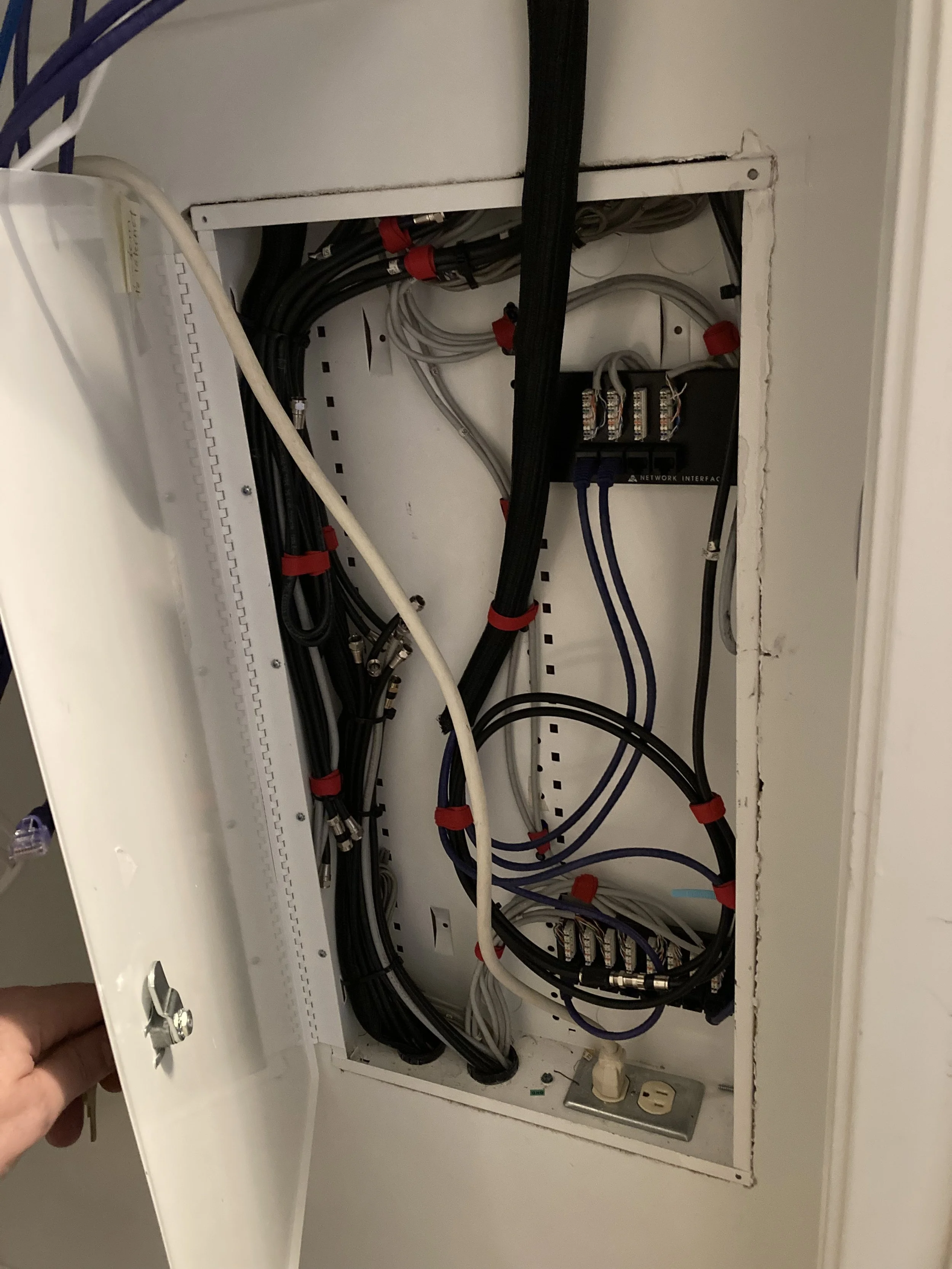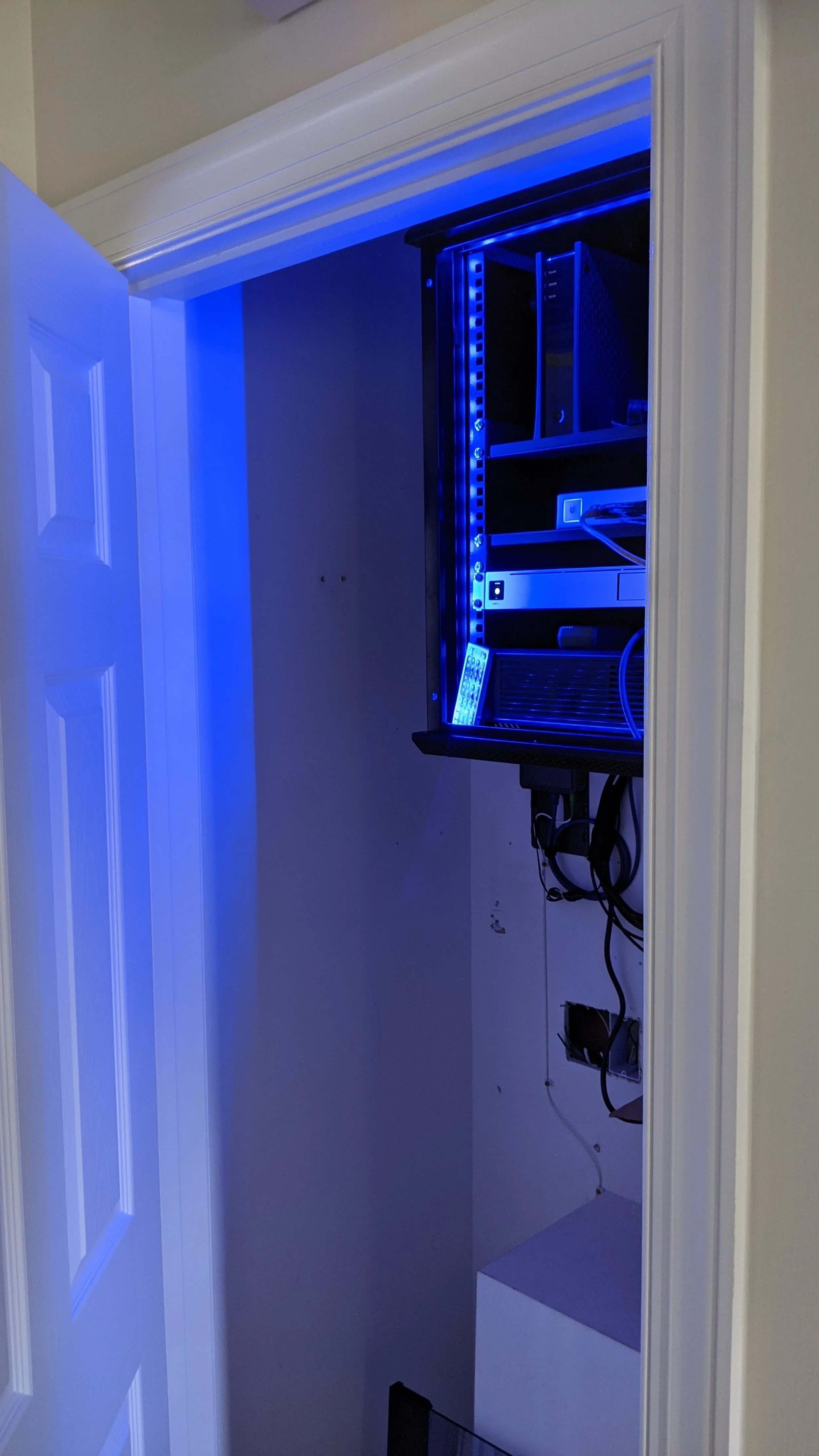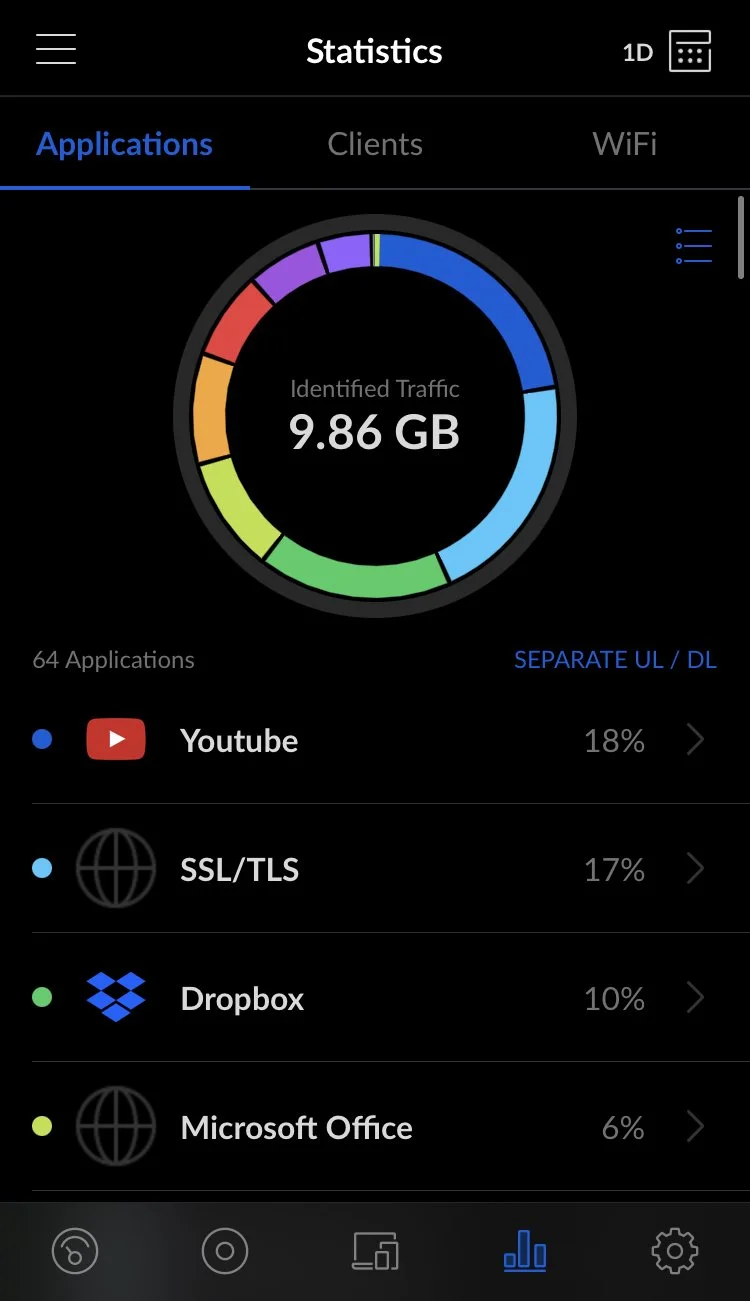
Residential
Services
Where Truly “Smart” Homes Begin
-

Simple Clean-Ups
Remove cables that are no longer useful, wrap & dress cables that are, and route and label everything to maximize useful space.
-

Powerful Home Networks
Stream 4K movies by the pool. Invite your friends over and have a party. Tell all the kids to update their XBOX consoles at the same time. Tablets, phones, IoT automation devices — our WiFi networks will stand up to any punishment you can throw at them, always fast and reliable.
-

Closet Upgrades & Builds
Did your home come with a standard 14x14” in-wall enclosure with just enough room to stuff all those cables - but not enough to be useful? We can upgrade it to 28” or even 40” tall units with plenty of room! Don’t have a cabinet or rack? We’d be happy to design & build one for you.
-

Custom Engineering
Each client’s solution is custom-engineered and tailored to the client’s budget and goals. Regardless of the scale of your ideas, we’ll make it happen for you.
-

New Cable Runs
Through walls, attics, crawlspaces, and basements, all new cable runs are done with high-grade solid copper CAT6 for blazing speed and reliability up to ten-gigabit, and dressed with velcro and J-hooks for classy appearance.
-

Ubiquiti Networks
Powerful wired & wireless networks with commercial-grade hardware, traffic analysis (especially helpful w/ kids!), security, and blazing speeds in every corner of your home and property.
Wiring Closets
In many homes built after 2000, you’ll find a wiring cabinet set into the wall - often in a coat closet on the first floor. The home’s communications cabling (coaxial, ethernet, alarm, etc) are routed into this box - usually along with an electrical outlet.
This is a valuable asset for any home - but unfortunately, they’re usually unsightly and dysfunctional messes of jumbled and unlabeled wires - with a door that won’t quite close anymore. Electricians, phone/internet/alarm techs, and previous owners have all had their hands in there, often leaving it worse than they found it.
Whether you just want the wires cleaned up so you can use your closet again, or you want to upgrade to whole-home WiFi, you’re in the right place!
-
SMC (structured media center) cabinets often contain cabling for TV, Internet, telephone, and alarm system networks - and are usually where Internet companies will bring the outside connection into the home.
-
The most common request is for clean-ups, usually so the folks can use their coat closet again. This can often be accomplished for a few hundred dollars, including moving the Internet modem/router out of a room and into the closet - hidden from view, and with minimal clutter.
-
These closets are where Internet hardware was meant to go. If your modem/router is taking up space on a desk or shelf - and looking like a mess of wire spaghetti - we’ll make them disappear into the closet, away from prying or judging eyes, fiddling hands, and dust!
-
If your home wasn’t built with an SMC cabinet, you still have tons of options. Whether your wiring all comes together outside the house in a “telco” box, or in your attic or crawlspace, or just comes falling out of a hole in the wall somewhere, we can absolutely improve what you’ve got. Get in touch - let’s make it happen.
-
A home SMC cabinet is an excellent starting-point for a whole-home ethernet/WiFi network. We’ve been designing & installing commercial-grade, super-reliable, and super-fast Ubiquiti networks from scratch for years, and we’d love to build one - and fill your whole home with Internet - for you!
WiFi Everywhere
Regardless of the size of your home, or who you are, it’s a safe bet you have dead-zones where your WiFi just doesn’t work well.
So… ready for real whole-home WiFi at last?
Mesh WiFi networks come in two main flavors, based on how its access points talk to each other. Both types provide WiFi to your devices, fix dead-zones, and dramatically expand your router’s range. We install both prosumer- and commercial-grade hardware, depending almost entirely on your goals and budget.
One WiFi network, stupid-fast everywhere, no dead-zones.
Free surveys & quoting!
-
Even the strongest WiFi access points (“antennas”) will struggle to cover large areas well. If your home is 2,000sqft and up, chances are you’re not very happy with your router’s WiFi.
Mesh systems cover a home with multiple access points, all linked together. Your phone talks to the access point with the strongest signal, and roams between them as you move about, just as your cell phone does.
-
Mesh access points need to talk to each other to form a “mesh” - they can do this either wirelessly, or through a cable.
Wireless is the simplest and easiest, but two big downsides - lag and wires. Each wireless “hop” introduces a tiny bit of lag that can quickly add up, and each node needs a power cord, which isn’t pretty.
Wired systems take advantage of upgraded phone wiring or new ethernet cabling in a home to connect all the nodes together in a central location (like a closet). With no visible wiring and no lag, this is the best solution.
-
Systems like Orbi and Eero offer out-of-the-box mesh networking at low cost, with each node costing around $200 and up.
These are great for simple needs, and are easy to set up for most people.
However, they’ll struggle to overcome wireless noise in dense areas, problems can be difficult to diagnose, and your control is somewhat limited.
You manage these "prosumer" networks yourself, on your phone/tablet.
-
Commercial hardware is necessarily more expensive, as it’s built to higher standards and for much higher performance. These systems are designed for reliability and performance, rarely needing any kind of service or maintenance.
Commercial hardware provides all the flexibility, customization, power, and performance needed to cover large homes with solid WiFi - even in dense areas.
You’ll never have to get up and “reboot the router” with these systems - and NateTheTech manages the system, remotely, FOR you.
-
WiFi 6 & 7 (6GHz) are powerful technologies, indeed. Very fast, but with several key limitations that should help decide whether they're right for you and how the hardware gets installed into your home.
We service & install it all. Wondering which is right for you, but WiFi tech isn't your bag?
Reach out today, and we’ll ensure you make the best-informed choice.

